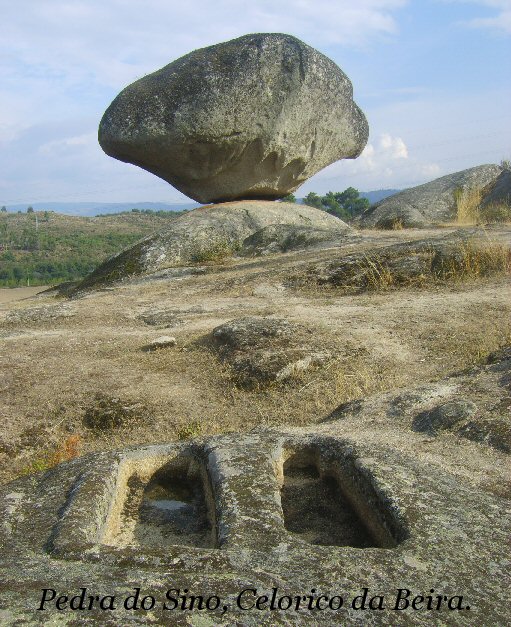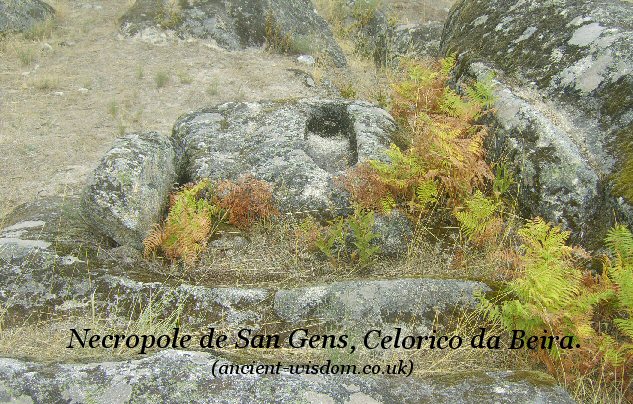|
Location:
Celorico da Beira. |
Grid Reference:
40� 34' N. 7� 19' W (Approx). |

 Necropole de San Gens:
Necropole de San Gens:
Sitting high on the Serra Biera is
the Necropole de San Gens (Saint Gens), composed of around twenty
rock-cut sepulchres surrounding the 'Pedra do Sino' - The 'Bell-Stone'.
The Bell-stone is a natural centre-point of an
atmospheric stone 'theatre', on the landscape. The attraction of the
location can still be felt today.
Unfortunately, EDP have built a pylon directly
over the site (duh..!).. so that one has to endure the crackling of the
wires overhead..
(Click
here for location map)
It is perhaps a coincidence that the same natural granite
indentations in the bottom of the 'Pedra do Sino' can be seen at the
similarly named San Gens dolmen in the
Algarve. They also feature heavily in the nearby rocks at the prominent
Tapadao site. It is possible that their
presence lent in some way to the significance of the site.

There are approximately twenty sepulchres
at the San Gens necropolis, said to have been cut between the I'st and
XII'th centuries AD.
(1) Sepulchres are a common sight in Portugal, but
this is one of the best examples in the North, where they are found
commonly alongside Neolithic remains (i.e.
Rochoso, Mamoa de Santa Marta). Evidence of settlement suggest a
village may have once existed on the nearby river Mondego.
(1)

There is a clear preference for being orientated towards the 'Pedra do
Sino', however this is only general, and does not apply for several of
the sepulchres, which are orientated in a different direction
altogether.

This sepulchre was for a child (The only one). The rocks surrounding
it were also carved.

There are also several good examples of quarry-marks for splitting
the granite.
This particular
style of splitting granite can also be seen at several other Neolithic
sites in Portugal (i.e. Orca complex,
Coureleiros, Lacara, etc ).
(Prehistoric Construction
Techniques)
(List of Prehistoric Portuguese sites)
(Portugal Homepage)
|